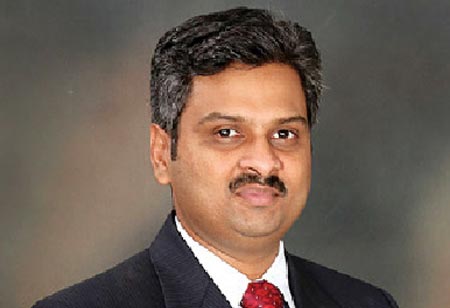A BITS Pilani alumnus, Mallikarjuna has close to a decade of IT industry experience working with companies such as Regenersis, FANUC India, and Jubilant Motorworks.
Mallikarjuna has over a decade experience in IT at FANUC India, a world leader in CNC & Robotics, later was heading IT at Jubilant Motorworks for about five years. Having a passion to work on Machine data & analytics is now a consultant to Electrono Solutions who have expertise in Remote Engineering, implemented Industry IoT in major Automobile & manufacturing industries connecting CNC’s , Robots, PLC’s, HMI’s, non-conventional machines for Data Analytics.
Industry 4.0 or IIoT is transforming manufacturing industries to involve more with physical cyber systems to achieve better results in Production, Maintenance & Quality. In India, there is drive & a need to ensure to adhere to the norms of BSVI in Automobile sector which can be achieved only through Industry 4.0.
This is going to be a big revolution, as we have seen in 1980-90’s during Banks & Financial institutions adapting Computers & IT, and this had help the entire industry to transform to the new banking system. Gone are those days where we had to physically go to bank, stand in queue with withdrawal slips or depositing money. Moreover, mobiles have taken this further more convenience of banking anytime & anywhere.
Industry 4.0 has evolved from Industry 1.0 which was introduced in 18th century where automobiles were driven by steam and water.
Industry 2.0 was in early 19th century where we had seen mass production of Automobiles powered by Electricity.
Industry 3.0 was seen during end of 19th century where Electronics & Software were introduced into Automobile to have better comfort, convenience & luxury.
We are heading towards the next Digital Era which is Industry 4.0, which involves bringing in all machines on digital platform with cyber physical systems, make a network layer, build data layer, application layer with analytics.
There is need for teams who have expertise in Engineering Mechanical, Electrical, Electronics, Automobile and Computer Science with application knowledge of PLC’s CNC’s who would be able to build appropriate solutions.
Mere implementation of readily available data analytical tools or building up PC’s to fetch data
will not provide any useful results. Few manufacturing industries who tried to build such solutions in-house were unsuccessful to great extent due to limitations on the entire knowledge.
As per the Forbes, Accenture source on market analysis. We will see about $28 billion amount of expected cost reduction in automotive sector from 2016-2010. There will be overall of 2.6 percent annual reduction in Inventory levels Expected from adopting Industry 4.0. It is expected to have at least 30 percent increases in Productivity that would be achieved with IIoT adopters. ROI will be seen over a period of two years and companies who have invested in early 2016 have seen these benefits. By 2020, it is expected that there will be 100 percent of Automobile & manufacturing sectors highly digitized.
-
Digital transformation will give a clear visibility to CXO level or senior management on the actual happenings on the shop floor
Mallikarjuna Sarma, Chief Digital Officer, Electrono Solutions
It has been proven that there will be about 5-30 percent of reduction on Repair, rework, scrap, service calls, warranty claims, write-off from obsolete finished goods.
Current challenges in shop-floor are:
• Timely unavailability of data for fault diagnosis
• Most of the data are in non-digital format & analysis is user dependent with expertise
• CNC machines have capability to display data, but it is humanly impossible to analyze data manually at each machine.
• PLC’s have not been used to provide data and few legacy systems with serial ports have limitations
• Other non-conventional machines like Cranes, compressors, induction motors, Generators, pumps etc., are in-capable of providing data.
Digital transformation will give a clear visibility to CXO level or senior management on the actual happenings on the shop floor. There will systems introduced like Sensors, HMI, PLC, SCADA, Device control systems and other engineering systems which will fetch the data. This will be processed from the huge data accumulated, later analyzed & appropriate data will be integrated with ERP, MIS systems. Decisions can be taken depending on patterns or signatures of data which can be automated called as Artificial intelligence (AI). Systems or machines can correct themselves when there is any kind of failure expected or alert prior to any major failures.
Further, this has enable introduction of AR/VR devices which can showcase current servo temperature, load on bearings, battery condition and Absolute position & vibration of spindle or any such parameters. Just looking at a machine with goggles one would be able to know health of the machine & its characteristics. Next vision would be Digital twin where one would be able to operate the machine or experience the machines using AR/VR and tweak system virtually to find out improved end results.
To summarize, Industry 4.0 shall give following benefits
• Reduce inspection and maintenance costs
• Reduce failure related repair or replacement costs
• Reduced revenue losses due to lost in plant production
• Enables the condition based monitoring
• Deferred capital costs due to load growth or equipment age and condition
• Improved confidence and security for dynamic over loading performance
• Detects incipient faults and assist in preventing failures and unplanned outages
• Provides monitoring and diagnostic for all vital parts by integrating.
